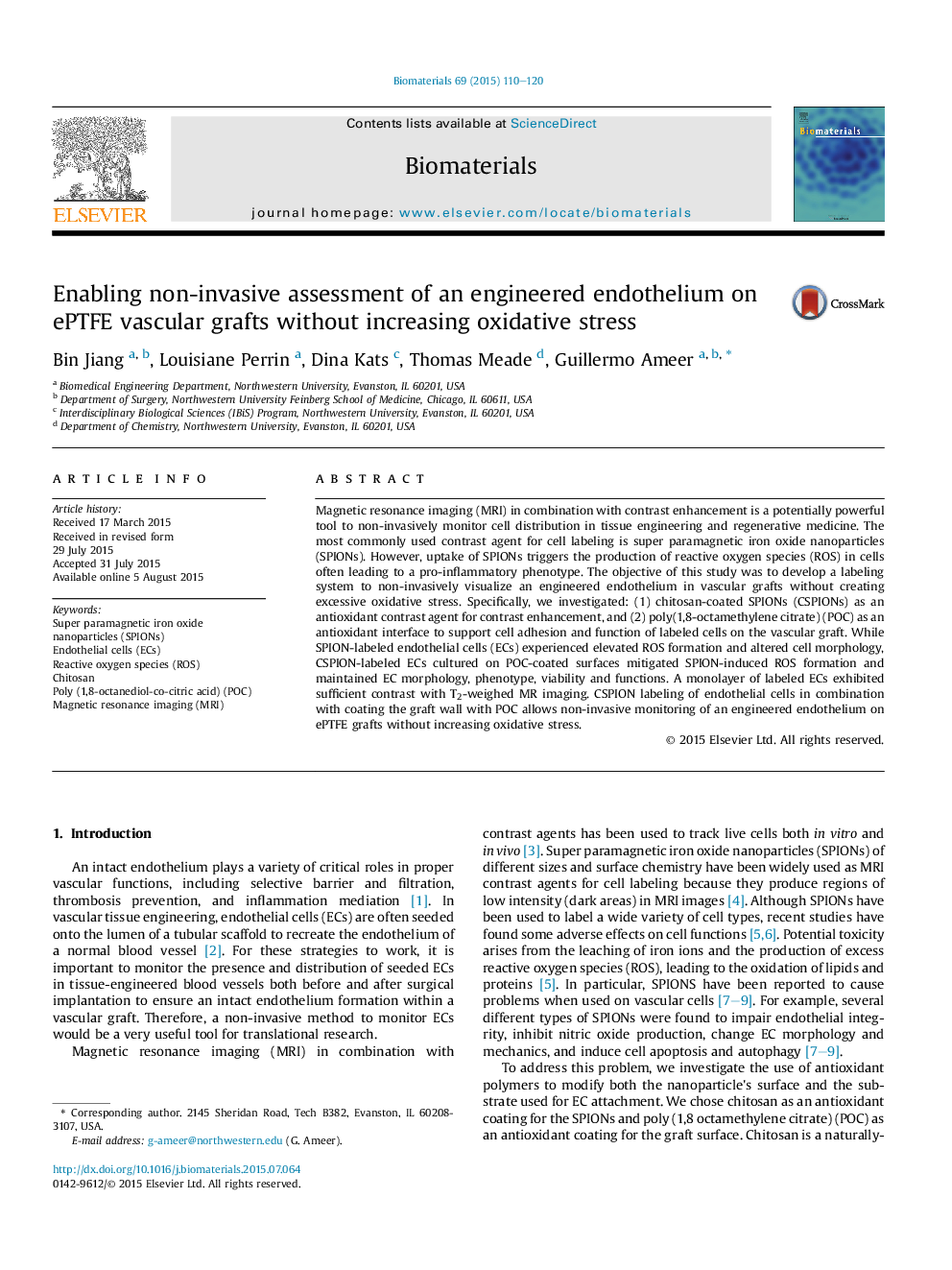| Article ID | Journal | Published Year | Pages | File Type |
|---|---|---|---|---|
| 5568 | Biomaterials | 2015 | 11 Pages |
Magnetic resonance imaging (MRI) in combination with contrast enhancement is a potentially powerful tool to non-invasively monitor cell distribution in tissue engineering and regenerative medicine. The most commonly used contrast agent for cell labeling is super paramagnetic iron oxide nanoparticles (SPIONs). However, uptake of SPIONs triggers the production of reactive oxygen species (ROS) in cells often leading to a pro-inflammatory phenotype. The objective of this study was to develop a labeling system to non-invasively visualize an engineered endothelium in vascular grafts without creating excessive oxidative stress. Specifically, we investigated: (1) chitosan-coated SPIONs (CSPIONs) as an antioxidant contrast agent for contrast enhancement, and (2) poly(1,8-octamethylene citrate) (POC) as an antioxidant interface to support cell adhesion and function of labeled cells on the vascular graft. While SPION-labeled endothelial cells (ECs) experienced elevated ROS formation and altered cell morphology, CSPION-labeled ECs cultured on POC-coated surfaces mitigated SPION-induced ROS formation and maintained EC morphology, phenotype, viability and functions. A monolayer of labeled ECs exhibited sufficient contrast with T2-weighed MR imaging. CSPION labeling of endothelial cells in combination with coating the graft wall with POC allows non-invasive monitoring of an engineered endothelium on ePTFE grafts without increasing oxidative stress.
